Asia

The Making of Puhan Rural Community in North China
Originally set up in 1998 in China, the Puhan Rural Community was the first peasant-initiated, cross-village organization established after the collapse of the top-down people’s communes and the implementation of the household responsibility system. Puhan learned a lesson about the exploitation of usurious microfinance and decided that it was capable of establishing a system of mutual aid credit by itself, changing the cultural emphasis on money. Its story of struggling with rural financial organizations opens up a debate on the trap of marketization and monetization, the root causes of loans and debts, the negotiating power of collectives, the production mode of ecological agriculture, and the redefinition of the commonwealth. | more…
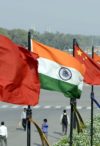
Since the emergence of COVID-19, the United States has quite openly decided to use the crisis, at a global scale, as a weapon against its perceived rival, China. In this context, India has taken a number of steps to restructure its relation to China, asserting economic stances and implementing policies that are becoming more and more closely entwined with its geopolitical positions and aspirations. | more…

COVID-19 is a great revealer, laying bare the structures of racial disposability that have sacrificed people, from migrant detainees to meat packers. We are also witness to the rise of anti-Asian violence. Brutal attacks against Asian Americans have exposed the fraudulence of the model minority myth and the assimilationist paradigm that legitimizes state violence against Black and Brown bodies. | more…

In The Killing Season: A History of the Indonesian Massacres, 1965–66, Geoffrey B. Robinson offers the most comprehensive history of Indonesia’s mass killings to date, arguing that the army, foreign governments, and monopoly capital must all be jettisoned from the country’s ruling coalition for meaningful justice to be achieved. | more…
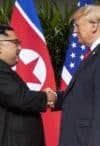
Kim Jong-un's Ongoing Peace Offensive
Ever since the United States divided the Korean peninsula in 1945, North Korea has had to cope with the existential challenge of U.S. hostility. Korea marks the western boundary of the empire, a border area where the sea power of the United States adjoins the land power of Russia and China. North Korea has been able to utilize this liminality to create a sovereign stateÑthe Democratic People’s Republic of KoreaÑwhose independence is not welcomed by either Moscow or Beijing but tolerated because the alternatives, a client of the other or absorption into the U.S. empire, are considered worse. Washington, as global hegemon, has been less willing to tolerate this independence but has faced constraints. The result has been a policy of hostility, of unrelenting diplomatic and economic war of varying intensity, stopping short of actual kinetic war, though never far from it. | more…
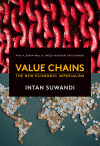
Winner of the 2018 Paul M. Sweezy – Paul A. Baran Memorial Award for original work regarding the political economy of imperialism, Intan Suwandi’s Value Chains examines the exploitation of labor in the Global South. Focusing on the issue of labor within global value chains—vast networks of people, tools, and activities needed to deliver goods and services to the market and controlled by multinationals—Suwandi offers a deft empirical analysis of unit labor costs that is closely related to Marx’s own theory of exploitation. | more…

In this second volume of his memoirs, Samir Amin takes us on a journey to a dizzying array of countries, primarily in the Arab World, Africa, Asia, and Latin America, recounting in detail the stages of his ongoing dialogue over several decades with popular movements struggling for a better future. Along the way, we meet government leaders, activists in popular movements, and working people, both rural and urban. As in his many works over the years, The Long Revolution of the Global South combines Amin’s astute theoretical analyses of the challenges confronting the world’s oppressed peoples with militant action. | more…

In the Republic of Korea, chaebols—diversified and large-scale conglomerate forms of capital governed dynastically by an owner and the owner’s family—have grown quickly, dominating the Korean market and substantially contributing to the Korean economy since their structuring in the 1970s. Some chaebol affiliates have grown into global economic powers within a mere thirty to forty years. However, the fast growth of the chaebols in Korea has also been associated with crises and in trying to manage these crises chaebols have not only changed the ways in which they accumulate capital, they have sought to establish hegemony over civil society. | more…

In 1957, in the Political Economy of Growth, Paul Baran made a seminal contribution to our understanding of the connection between economic surplus—a concept he introduced into the development discussion—and growth. Given that the ruling class controls the surplus of society, how the surplus is used—whether it is invested, consumed, or simply wasted—is at its discretion. The effective utilization of surplus implies a reasonable rate of capital accumulation and economic development. In the following study of the utilization of surplus I compare the size of surplus and gross capital formation in a variety of countries starting from the mid–nineteenth century. | more…

Eni Lestari interviewed by Promise Li
The precarious state of migrant workers has become a major area of concern for the contemporary global economy. In Southeast Asian regions in particular, the number of migrant workers has spiked since the 1990s. In the city of Hong Kong, domestic migrant workers, predominantly Filipino and Indonesian women, now make up around a tenth of the total working population. Since the beginning of Southeast Asia’s labor diaspora, activists have been fiercely organizing against the rampant exploitation and abuse of migrant workers. | more…
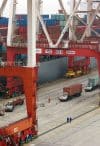
China’s economic development and success has been widely misunderstood and treated with perplexity. This overview of the Chinese economy provides an analysis of the drivers of the country’s growth and crises, including industrialization and the agrarian question. | more…
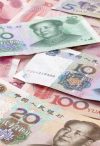
There is considerable interest in the history and characterization of China’s economy. This overview of the evolution of the renminbi from the late Qing dynasty to the present, shows how China’s political and economic changes in the twentieth and twenty-first centuries are reflected in the development of its highly contested modern currency system. | more…











